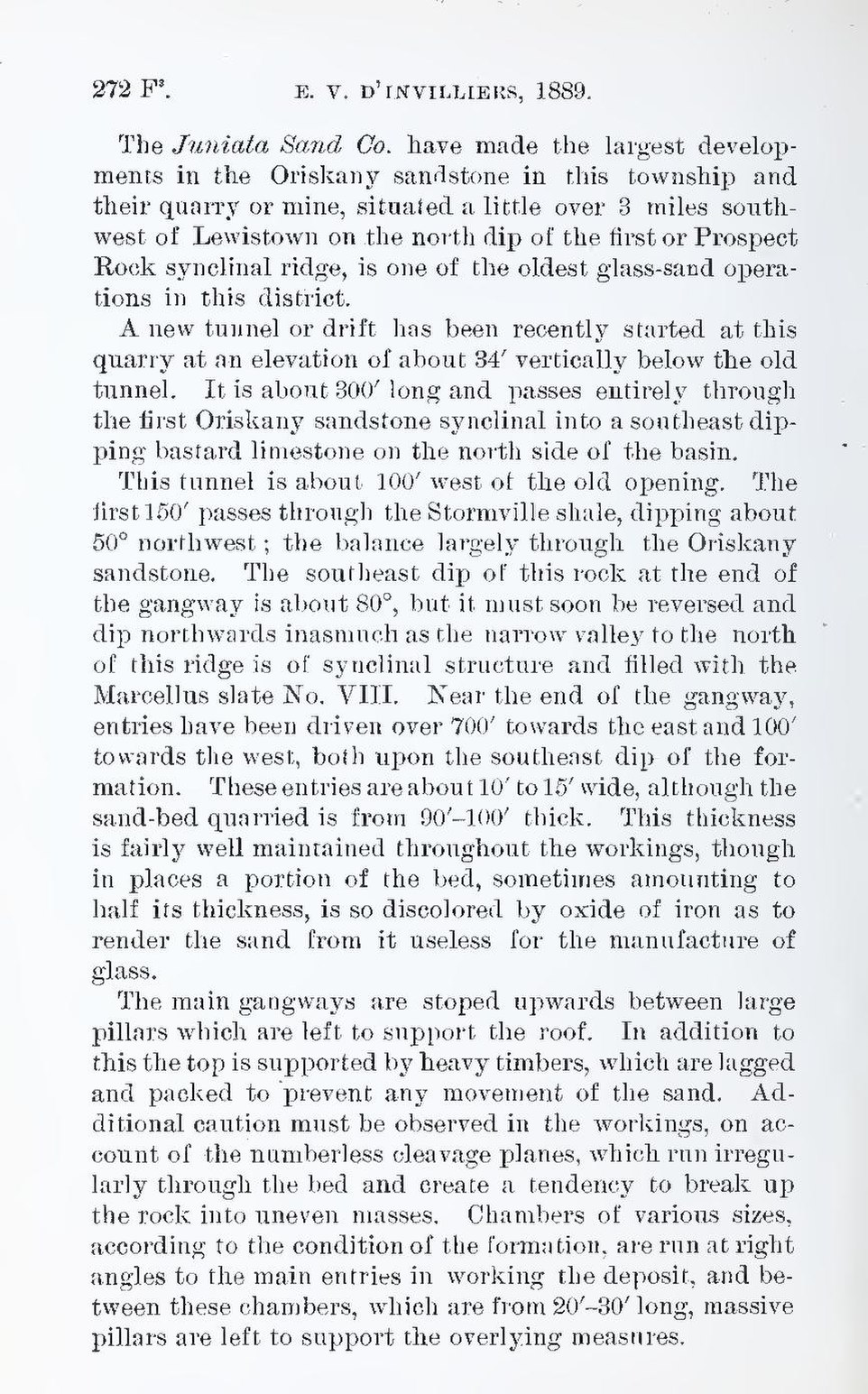The Juniata Sand Co. have made the largest developments in the Oriskany sandstone in this township and their quarry or mine, situated a little over 3 miles southwest of Lewistown on the north dip of the first or Prospect Rock synclinal ridge, is one of the oldest glass-sand operations in this district.
A new tunnel or drift has been recently started at this quarry at an elevation of about 34′ vertically below the old tunnel. It is about 300′ long and passes entirely through the first Oriskany sandstone synclinal into a southeast dipping bastard limestone on the north side of the basin,
This tunnel is about 100′ west of the old opening. The first 150′ passes through the Stormville shale, dipping about 50° northwest; the balance largely through the Oriskany sandstone. The southeast dip of this rock at the end of the gangway is about 80°, but it must soon be reversed and dip northwards inasmuch as the narrow valley to the north of this ridge is of synclinal structure and filled with the Marcellus slate No. VIII. Near the end of the gangway, entries have been driven over 700′ towards the east and 100′ towards the west, both upon the southeast dip of the formation. These entries are about 10′ to 15′ wide, although the sand-bed quarried is from 90′–100′ thick, This thickness is fairly well maintained throughout the workings, though in places a portion of the bed, sometimes amounting to half its thickness, is so discolored by oxide of iron as to render the sand from it useless for the manufacture of glass.
The main gangways are stoped upwards between large pillars which are left to support the roof. In addition to this the top is supported by heavy timbers, which are lagged and packed to prevent any movement of the sand. Additional caution must be observed in the workings, on account of the numberless cleavage planes, which run irregularly through the bed and create a tendency to break up the rock into uneven masses. Chambers of various sizes, according to the condition of the formation, are run at right angles to the main entries in working the deposit, and between these chambers, which are from 20′–30′ long, massive pillars are left to support the overlying measures.
